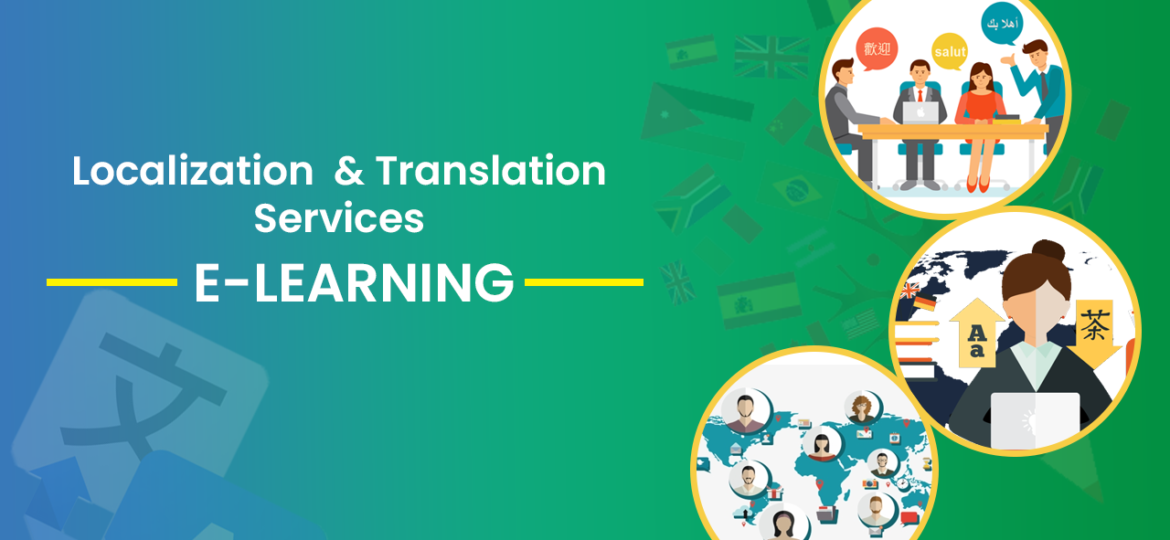
It is true that English has emerged as the universal language that connects the entire world. But the importance of the mother tongue is beyond any discussion or doubt. Having said that, how do we take advantage of global content that raises our level of knowledge to a great extent? The answer is translation and localization.
It is important here to understand the difference between translation and localization. By “translation” we mean the process of converting text from one language into another so that the meaning is equivalent. On the other hand, “localization” is a more comprehensive process that includes translation and, in addition, addresses cultural and non-textual components as well as linguistic issues when adapting a product or service for another country or locale.
With the advancement in technology, eLearning is being adopted on a global scale. Surely, the eLearning industry cannot lag behind in this aspect, especially considering the global nature of eLearning.
Translation And Localization In eLearning
Translation and localization in eLearning need a comprehensive and well-planned approach due to the presence of multimedia components.
- Audio
Audio is a major component in eLearning modules that needs special attention. Not only does it need to be translated, but it also needs to be carefully recorded in the native language, taking into account the accent. The audio recording should always be done by a speaker of the native language. - Transcript
A transcript is the text version of the audio. While many experts believe in keeping the transcript in the native language, many experts also opine that the transcript should be left in the source language. The decision depends on many factors, such as audience profile and requirements. - On-screen text
All on-screen text must be localized. - Navigation button
Navigation buttons are, in most circumstances, part of the authoring tool. While modern authoring tools support most of the languages, it is often missed by many. - Graphics
Graphics can be generic or customized. While illustrations and icons are in general more universal, characters, graphics with the text, etc. need special attention. Localization of the graphic elements goes a long way in connecting with the native audience.
Instructional Aspects
Learning is most effective when it is applied to the daily life of the learner, connecting the learner emotionally and environmentally. This specifically calls for localization rather than a literal translation. Language localization is the process of adapting a module’s translation to a specific country or region. All examples, scenarios, etc. need to be aligned to the local audience. This is a critical aspect of localization and needs a high degree of local knowledge and language skills.
Workflow
Most eLearning companies have their custom workflow for the localization of eLearning modules. eLearning experts opine that a standard localization workflow should have the following basic components:
- Text extraction
All text present in the module needs to be extracted in a set format to be sent for translation. - Text marking
Depending on the client’s requirements, the texts to be transliterated and texts to be retained in the source language should be marked. - Translation and localization
Expert linguists perform the text translation and localization of all texts, making sure that materials are culturally appropriate for the target audience. - Translation review
The translated text undergoes “expert review” to ensure quality. - Multimedia production
The voiceover recording takes place by designated local language speakers. Recorded audio is reviewed by experts to ensure quality. If image conversion is necessary, the multimedia team does the necessary updates. - Integration
All texts and multimedia components are integrated into the module. Language-specific QA experts do an extensive review to ensure the end product conforms to quality standards. - Quality assurance
Quality assurance is an essential component of any eLearning product. The localization of eLearning is no different. However, in localization projects, the quality assurance team must know the target language.
Conclusion
Localization is a key aspect of any learning activity, be it classroom training or eLearning. eLearning offers an additional advantage, allowing learners to choose the language. This gives the capability to roll out one single module in many languages. This makes the tracking and management of the training module easier.
